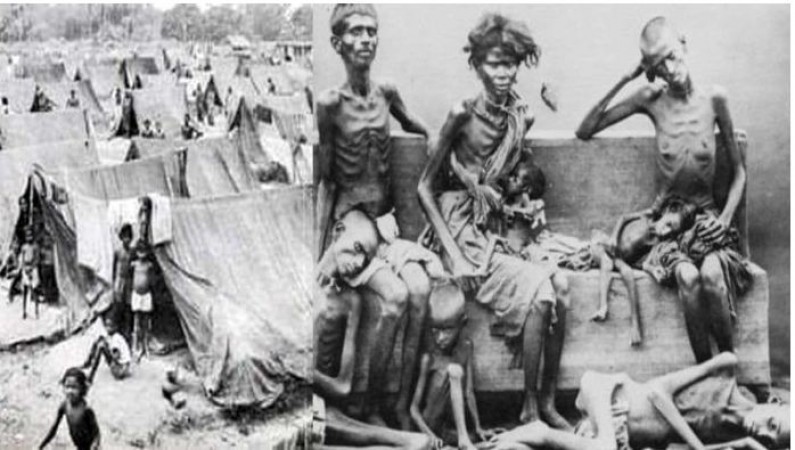
Kolkata: January 31, 1969, the date when police opened indiscriminate fire on Hindu refugees settled on an island in the Sundarbans of West Bengal. This incident is known as the Marichjhapi Massacre. Nothing can be said for sure about the number of Hindu refugees killed in this worst genocide of independent India. Now, a march has been taken out by the Bengal BJP to commemorate this massacre. The aim of this march is to remember the helpless refugees who were put to death during the left-wing regime.
The number of Hindu refugees killed in Marichjhapi is said to be around 10 in government files. When in different estimates this figure reaches 10,000. Most of those who were killed were Dalits (Namasudras). Those on whose behest this massacre took place were the Leftists who ruled Bengal for decades by the vote of dalits. At the same time, the massacre and the conspiracy to erase it from the pages of history was given tacit consent by the congress, the ruling party at the centre. The bloody panic that the Left had created in bengal during its three-decade rule is the result of not much information about the nearly four-decade-old incident. Amitav Ghosh's book 'The Hungry Tides' is written against the backdrop of this massacre. Apart from this, there is also a lot of details of this massacre in the newspapers of that time like Ananda Bazar Patrika and The Statesman. The most vivid and authentic details of this can be seen in a book by journalist Deep Haldar titled 'Blood Island: An Oral History of the Marichjhapi Massacre'. Deep has shown the horror of that horrific incident through the survivors of this massacre and other characters related to it.
You will be surprised to know that the left front government had encouraged those who were killed by these leftists to settle here. This was at a time when the Left did not come to power and Hindu Namasudra refugees considered him their well-wisher. At the behest of the Left parties, especially at the call of leaders like Ram Chatterjee, these namasudra refugees came from Dandakaranya and settled on the Marichazhapi island of the marshy Sundarbans Delta. On the strength of his efforts, he made this deserted island habitable without any government assistance. I started farming, i started fishing. He even opened schools and clinics himself. This group of Namashudra Dalit Hindus was a small part of the exodus, who were persecuted from Bangladesh and settled in different parts of India. However, after getting power, the Left began to feel a burden on these refugees.
According to a media report, around 40,000 refugees from Bangladesh settled on the island of Marichzhapi in January 1979. Citing the forest laws, the Left Government hatched a conspiracy to drive them out. On January 26, Section 144 was imposed in Marichajhapi. The island was surrounded by 100 motor boats. The supply of all commodities, including medicines, foodgrains, was stopped. Poison was mixed in the only source of drinking water. Five days later, on January 31, 1979, the refugees were brutally killed in indiscriminate police firing. Witnesses estimate that more than 1,000 people were killed during this period. According to media reports, a team had reached here after 15 days with permission for logistics supplies on the orders of the High Court. It also included the well-known poet Jyotirmoy Dutt. According to Dutt, he saw the bodies of 17 persons who died of hunger. About 30,000 refugees remained in Marichzhapi even after the January 31 shooting. In May 1979, left-wing cadres along with the police arrived to drive them out.
Between May 14-16, there was a period of fierce massacre from January. The incident is given in 'Blood Island' with a very painful description. Houses and shops were burned down, women were raped, hundreds of murders were committed and corpses were thrown into the water. Those who survived were forcibly sent to the Dudhkundi camp in trucks. The book quotes an eyewitness as saying that between '14-16 May 1979, the most horrific violation of human rights took place in independent India. The West Bengal government forcibly expelled more than 10,000 people from the island. People were murdered with rapes, murders and even poisons and corpses were buried in the sea. At least 7,000 thousand men, women and children fell into the cheeks of famine. ' The book quotes the entertainment merchant as saying that the corpses were also dumped in the forest and the tigers of the Sundarbans got addicted to eating human meat.
Raising Day:PM Modi extends wishes to Indian Coast Guard
Budget 2022: Industries in TN expecting higher production linked incentives